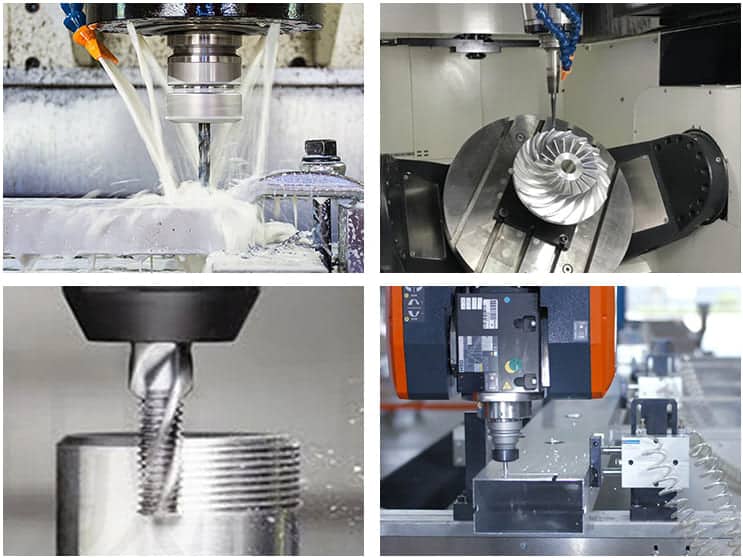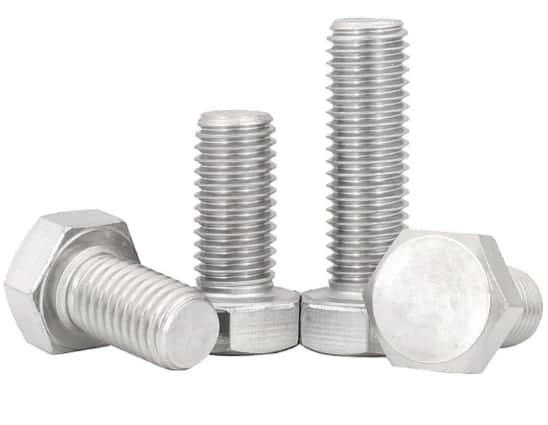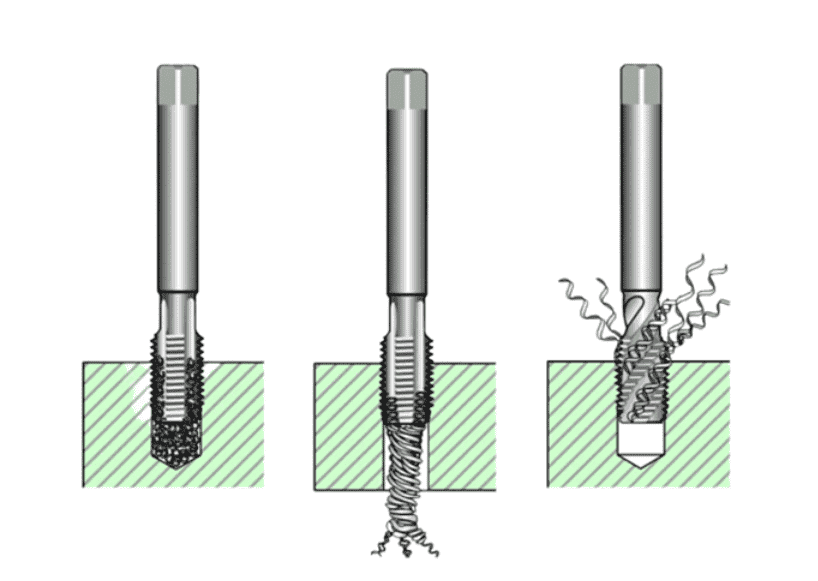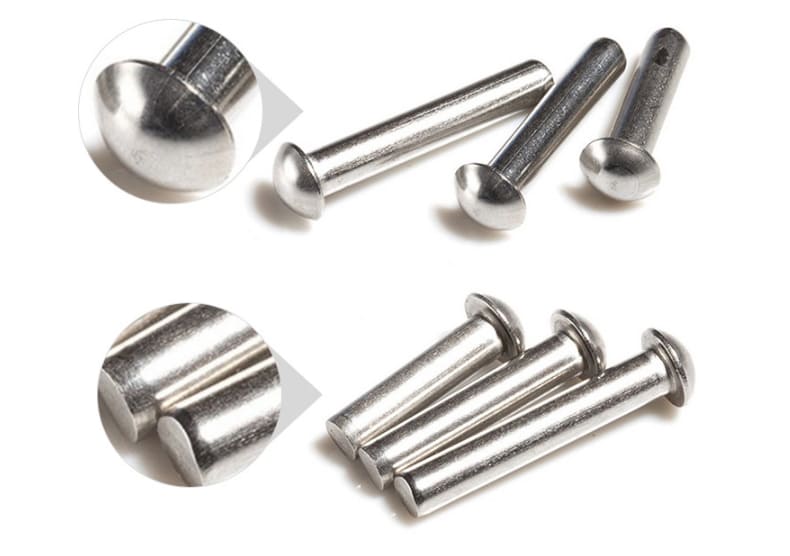Regarding subtractive manufacturing, CNC and Laser cutters are two of the main cutting methods most popularly employed in the industry.
If you are unaware of the intricacies of manufacturing and cutting methods, you may be at a loss for knowledge.
These two manufacturing methods are becoming a vital part of work for many individuals in the industry, and therefore, we have curated this article to make this easier for you.
Let’s discuss the basics of each method and how they vary in pricing. After that, we will share why each is better than the other in each aspect specifically, so let’s begin.
Comparison of CNC Machining and Laser Cutting
Before we go into details, you need to understand what these processes are in terms of definition and their purpose. Then we will see how they differ.
What is a CNC Machine?
A CNC machine or router is a cutting machine that the operator can control through a computer or program with a hand-held router mounted as a spindle.
The machine uses the spindle to cut through different materials when passing through or around a material through friction.
As the machine is controlled through a computer program or Computer Numeric Control, it is named CNC.
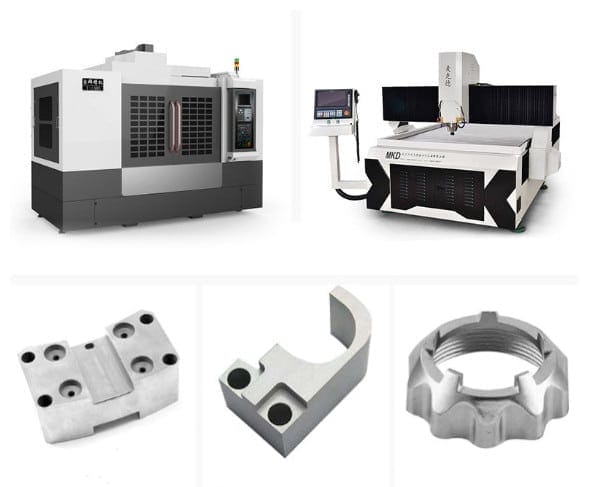
What is Laser Cutting Machine?
If you are using an intense laser beam to do your cutting, or in some cases, engraving different materials, then you are using a Laser cutting machine.
The light, in this case, is amplified by radiation or emission through optics. Laser is the abbreviation of Light Amplification by Stimulated Emission of Radiation.
Laser-cutting machines are also controlled by computer programs such as CNC machines.
Overview of the Differences Between CNC Machining and Laser Cutting
In summary, their main difference is how these machines use their tools to make the cutting.
CNC uses tools and bits that are sharp as required to cut, but it happens through friction.
On the other hand, Laser cutting utilizes a hot fiery laser beam that does all the cutting that is fired at the job part.
Because of these significant differences, both scenarios shine over the other at specific work and tasks.
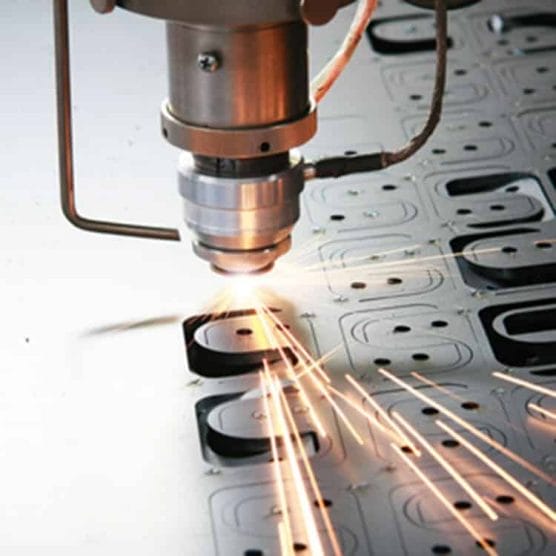
Advantages and Disadvantages of CNC Machining and Laser Cutting
Let’s look at some of these machines’ significant advantages and disadvantages.
- Precision – Both machines are much more precise than manual or traditional machines.
- Repetition – Because of computer-controlled programming, jobs can be repeated indefinitely based on operators’ requirements.
- Size – CNC machines are relatively larger than laser machines and are more suitable for bigger projects.
- Dense and Hardwood – Such materials are recommended to be cut with CNC as the laser lacks depth, is prone to catching fire, and is dangerous for laser cutting.
- Design Intricacy and Detailed Pieces – Laser cutting can cut more intricate designs making them more cost-effective. If you want signage or special plywood projects, you should better go with laser engraving with more accuracy and cost-effectiveness.
Read More: Where Do I Find CNC Laser Cutting Service?
CNC Machining vs. Laser Cutting – Cost Analysis
Now that you have a basic understanding of CNC and Laser cutting machines let’s go over their cost analysis for more clarity and how they differ.
Factors Affecting the Cost of CNC Machining and Laser Cutting
You must consider many factors before buying one machine over the other, and in this section, we are only discussing what factors affect the cost.
- Initial Investment – You must factor in machine prices, the tax incurred, customs and shipping rates, etc.
- Operation Costs – How much each machine cutting costs for electrical units consumed during each job’s duration and parts or tools’ life.
- Size and Footprint – How much space will they cover, and will there be enough room for other things or activities?
- Manufacturing Tools – The tools and bits for both machines are factored in on the overall cost of your operation.
- Speed of the Machines – The faster a machine cuts and processes, the faster the customer can pay you.
- Depth of the Cut – Deeper cut means more wastage of material though that mainly depends on the job.
- The Complexity of the Job – The more complex a job is, the more time it will consume.
- Trained Professional – You need to factor in the salary of the trained professional, or you may need to train your employee to operate the machine.
- Maintenance – Parts replacement also factors in the periodic maintenance of the machines.
Cost Comparison Overview between CNC Machining and Laser Cutting
Let’s look at the major cost differences between CNC and laser machines, including their initial investment.
| Features | Laser Cutters | CNC Machines |
| Machine Prices | $200 – $150k | $300 – $130k |
| Type of Cutting | Contactless | Contact-based |
| Availability of Tools | Limited | Versatile |
| Material Capability | Limited | Versatile |
| Cut’s Depth | Low | High |
| Cut’s Width | Thin | Wide |
| Clamping Requirement | Not required | Required |
| Cutting Speed | Fast | Slow |
| Accuracy of the Machine | High | Comparatively low |
| Support for 3D carving | No | Yes |
| Software Support | CAD, Control | CAD, CAM, control |
| Maintenance Level | Low | High |
| Noise Level | Low | High |
When it comes to the initial cost investment of each machine, the following is the overview based on the size of the machines.
| Size of the Machine | Laser Cutter Machine | CNC Machine |
| 3018 Size | $200 – $400 | $300 – $500 |
| Desktop Size | $350 – $5k | $500 – $3k |
| Benchtop Size | $500 – $10k | $700 – $4k |
| Large Size | $3k – $150k | $4.5k – $130k |
Analysis of the Cost-Effectiveness of CNC Machining and Laser Cutting
Following are some typical scenarios where the cost plays a significant factor in choosing one machine over the other or between the sizes of these machines.
Initial Investment
You need to consider machine prices, the tax incurred, customs and shipping rates, etc., to break even and make a profit; you need as much minimum initial investment as possible.
Overall, based on your requirements, you have a lot of room to play between $200 – $150k though industrial CNC machines are on par with laser cutters regarding accuracy and speed.
Both machines have a similar price range; the primary difference comes in operation costs and how you maintain them.
Operation Costs
The primary cost of machine cutting is the electricity costs calculated in units consumed during each job’s duration and parts or tools’ life.
You need to factor this into the price of the product you are selling and the profit you need to make.
Laser machines have quicker cycle time than CNC machines, reducing the per unit cost of electricity for the same job.
They have smaller and lesser parts involved which further reduces the operational costs.
But when you need to change the laser source, it is a considerable cost incurred during the machine’s lifetime, which can be between 5-15% of the machine’s actual cost.
Size and Footprint
Based on your working floor or area, you must consider how much the machine will cover and how much room is left for other purposes.
Factor in the gantry or other related attachments into the machine’s footprint.
Laser machines eliminate this factor by using a galvanometer laser head, making them more portable.
For small workshops and smaller jobs, the laser cutter is more economical.
Manufacturing Tools
The tools and bits for both machines are factored in on the overall cost of your operation.
Though you can start with a few bits or a single-tool of laser cutter with varying power and speed, you can enhance your repertoire when making money.
CNC Machines have more variety and flexibility regarding a massive assortment of bits and tools, which may increase initial cost.
In the case of laser, you can adjust power and speed in laser, but if you need a more powerful laser for more variety, the cost is almost the same as a slew of tools and bits for CNC.
Maintenance
The working material waste can lodge into internal parts of the CNC machine, which may cause cost overheads during the machine’s lifetime and will need frequent cleaning and greasing, increasing cost.
Furthermore, wear and tear of the spindle is a considerable cost incurred periodically.
The laser cutter has mostly a one-time cost; after that, it mostly requires cleaning, so fewer maintenance costs than CNC.
When to Choose CNC Machining Over Laser Cutting?
In this section, we will explain when to choose CNC over Laser.
Specific Situations in Which CNC Machining is More Cost-effective
The following are some of the reasons when choosing CNC machines over laser.
- Waste is removed easily by vacuum blowing.
- No toxic waste/gas due to burning material like the laser cutter.
Advantages of CNC Machining in These Situations
- Safer working conditions are ensured.
- Workers can skip that irritating smell.
When to Choose Laser Cutting Over CNC Machining?
In this section, we will explain when to choose Laser over CNC.
Specific Situations in Which Laser Cutting is More Cost-Effective
The following are some reasons for choosing a Laser cutter over a CNC.
- When it comes to maintaining.
- Lesser wear and tear of parts.
- Lesser polishing of parts and better finishing due to melted sealing.
- Little to no noise at work.
- More precision in working.
- Fewer mechanisms and clamping are required.
- Depth of cut and 3-dimensional cutting.
Advantages of Laser Cutting in These Situations
- Laser machines have lesser parts and take longer to replace the optical system.
- It requires minimal waste cleaning as there is lesser machining and lower wastage.
- No parts have wear and tear, for example, the spindle.
- The spindle causes high working noise even at low load settings where laser noise suits residential areas.
- Typically, CNC needs about 0.004” tolerance between adjacent cuts, which is far less for the laser, around 0.0004”.
- As the CNC machine works from friction, it needs stronger material for the belt and movement mechanism, costing more. In contrast, a Laser cutter can easily hold the material with less clamping force.
- The major pros of CNC machine cutting are that it can easily make a 3D carving of any material because of the easy and simple combination of all three axes with increased cut depth.
CNC Machining vs. Laser Cutting: Costs and Implications
Finally, we will discuss some implications of both machines regarding cost.
Summary of the Cost Comparison Between CNC Machining and Laser Cutting
The price and age of CNC cutting make it more viable in the industry, where laser cutting is more costly, especially during processing.
The operational costs are higher due to higher electrical unit consumption. If cost is not an issue and more precision and consistency are required, then the Laser cutter seems more viable as you get more control.
Implications for Businesses
As we said, CNC machines are more viable for small to large-sized industries because of how long they have been used.
Furthermore, if you want to work on bigger parts, businesses should choose CNC machines over Laser cutters or if you are looking for curved, diagonal, or straight line cuts. These are not easily achievable with laser cutters.
Regarding smaller parts, engravings, or industries short on space, Laser cutters are far superior in working than CNC machines.
Future Prospects of CNC Machining and Laser Cutting in Manufacturing
The future of CNC machining looks promising because of advancements in science providing more precision tools and techniques.
Furthermore, more complicated sensors and control systems can help companies produce more accurate machined parts and enhance tolerances.
Diamond-cutting tools have further enhanced the surface finish even with harder materials such as titanium or stainless steel.
Similarly, there is a massive leap in software development and complex algorithms that can minimize errors, improving the efficiency of CNC machining.
These advanced algorithms and programs can make adjustments in real-time to finish the product under desired specifications.
Laser cutting is not far behind as they are expected to grow more in the future and at an incredible rate.
It is estimated to increase to $6.72 billion by 2024 as the demand rises. The increase in the automation of the Laser cutting machinery allowed operators to quickly take 3D designs, which the program can automatically input into the Laser cutter to produce intricate designs.
It is apparent that both machining processes are prone to massive growth in the near future.

 info@yijinsolution.com
info@yijinsolution.com (+86) 188-2253-7569
(+86) 188-2253-7569
